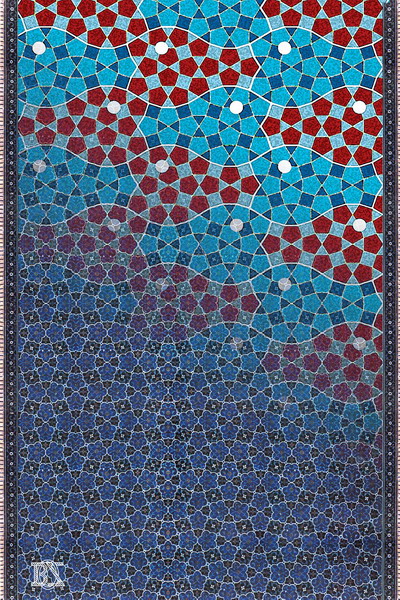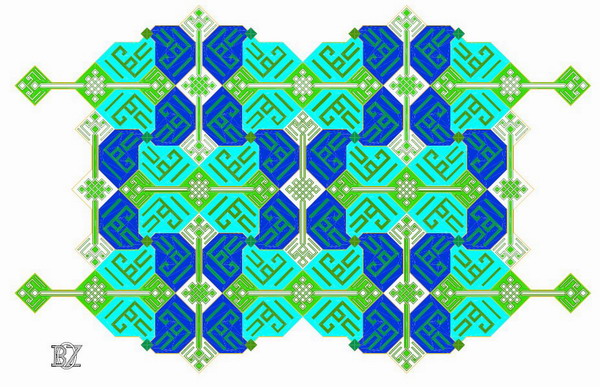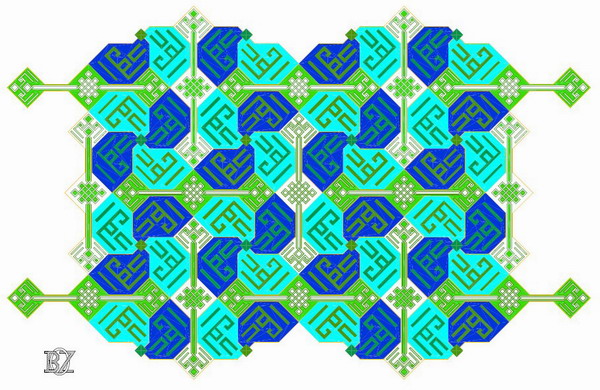Behrooz Zabihian
"Fish in an Islamic mausoleum"
Paper , 17" X 25", 2006.

The background tiling is an original tiling in an Islamic mausoleum in Qom
, Iran (it is called "Hazrat-e-Masoume" ) . I found a fish shape pattern
inside the tiling and by using CorelDraw I faded the original tiling into the
fish pattern. In the Islamic world of the medieval time, it was prohibited to
make tilings (or draw pictures) of animals and human beings. Of course the maker
of the original pattern did not intend to put the fish inside the pattern. The
pattern is made out of triangles, rectangles and pentagons.
"Make fish out of triangles, rectangles and pentagons"
Paper , 17" X 13", 2006.

The pattern is made out of triangles, rectangles and pentagons. This pattern
can be called an " Escher like pattern" because it has the same structure
as Escher , the Dutch artist , used in his artworks .
"Distorted "Toranj #1"
Paper , 20" X 14", 2006.

"Toranj" is a pre-Islamic Iranian pattern (it is also used in many
of Islamic ornamental patterns), I changed its original shape and put four of
them around a little square, and then by using "Reflection" and "Translation"
method, I made the pattern. Also I put some words of Quran inside and between
the shapes. This pattern should be compared with the next one. They show, how
the change in the colors (and not the shapes) make differences in the appearance
of a tiling.
"Distorted "Toranj #2"
Paper , 20" X 14", 2006.

Another variation of colors with the same shapes of the previous pattern .
Behrooz Zabihian
Student of Electronics engineering at Saveh University and also doing research
on history of geometry
" Traditional Islamic tilings have straight and limited geometrical rules.
Elements of these tilings are also common and limited. For many centuries, these
rules were taught from father to son, and the son just followed the same way.
His only creativity was putting different elements together in a wall or interior
of a dome and changing the colors or ornaments inside the elements, but not
manipulating shapes.
By using software like AutoCAD and Photoshop, I am discovering different aspects
of art and geometry in Iranian heritage of medieval time. I am trying to pick
some parts of a tiling , manipulate them and put them together in a new tessellation
in order to see whether it is possible to create new tilings based on traditional
Islamic tilings or not. Sometimes I use techniques which had been used by M.
C. Escher, the Dutch artist."